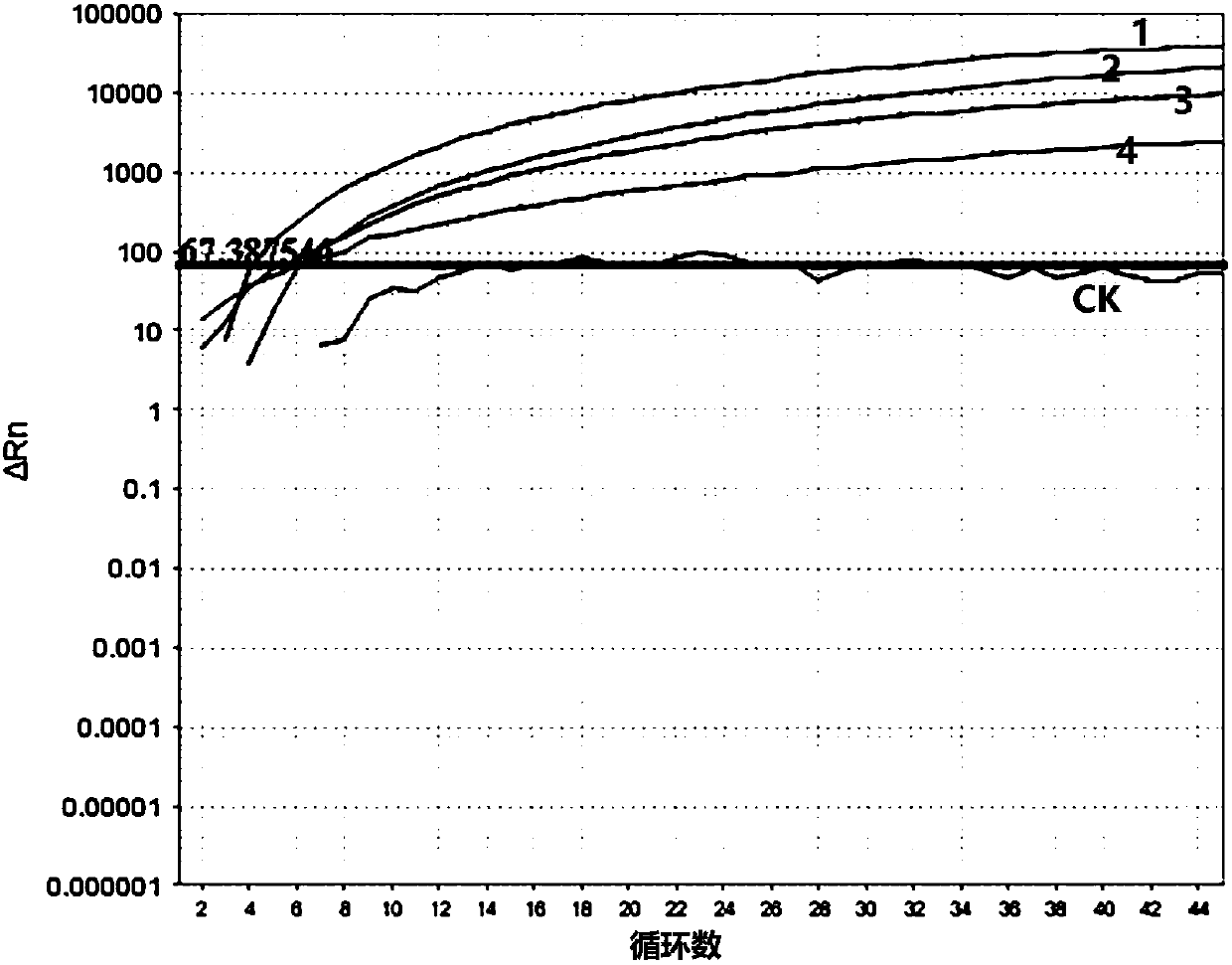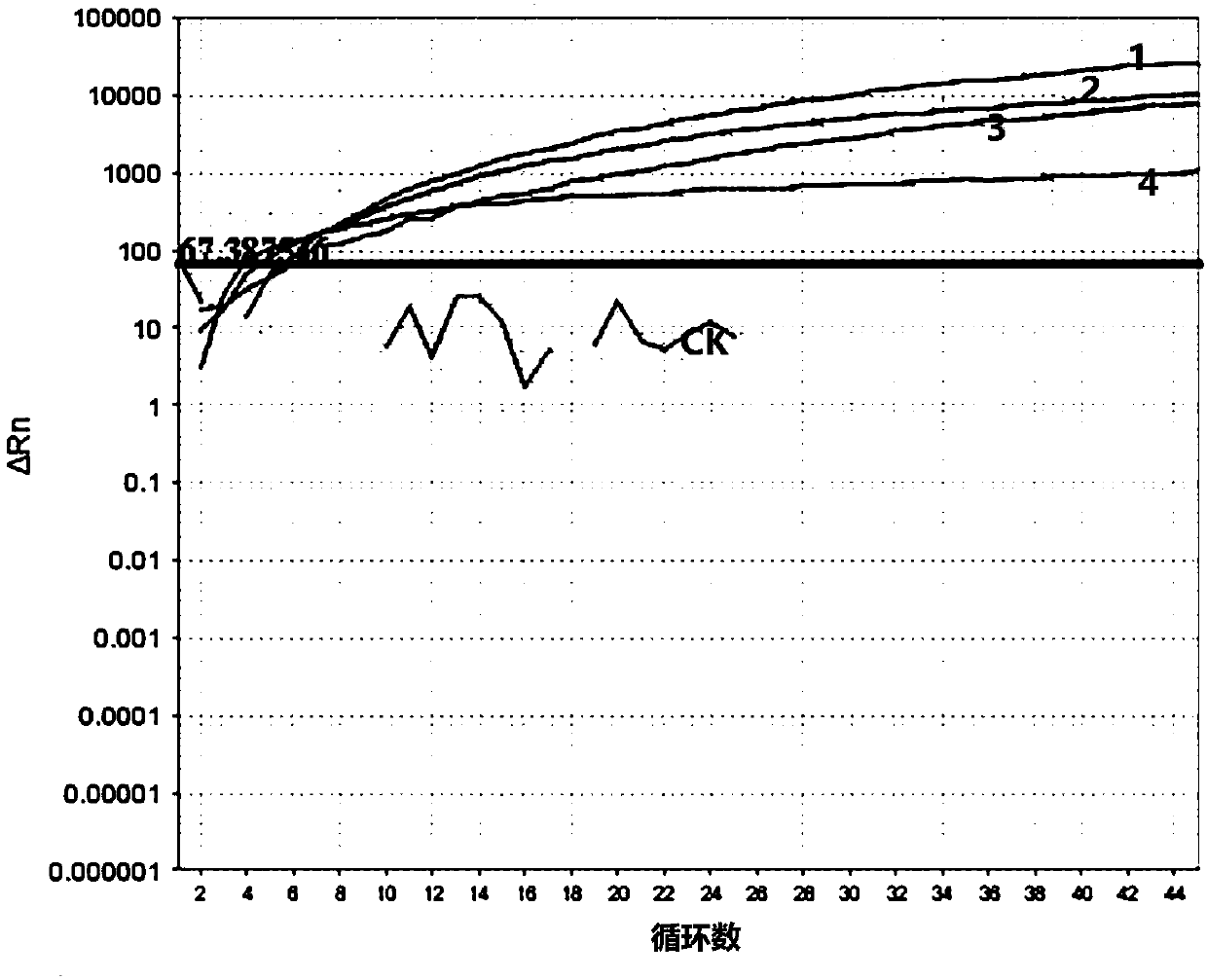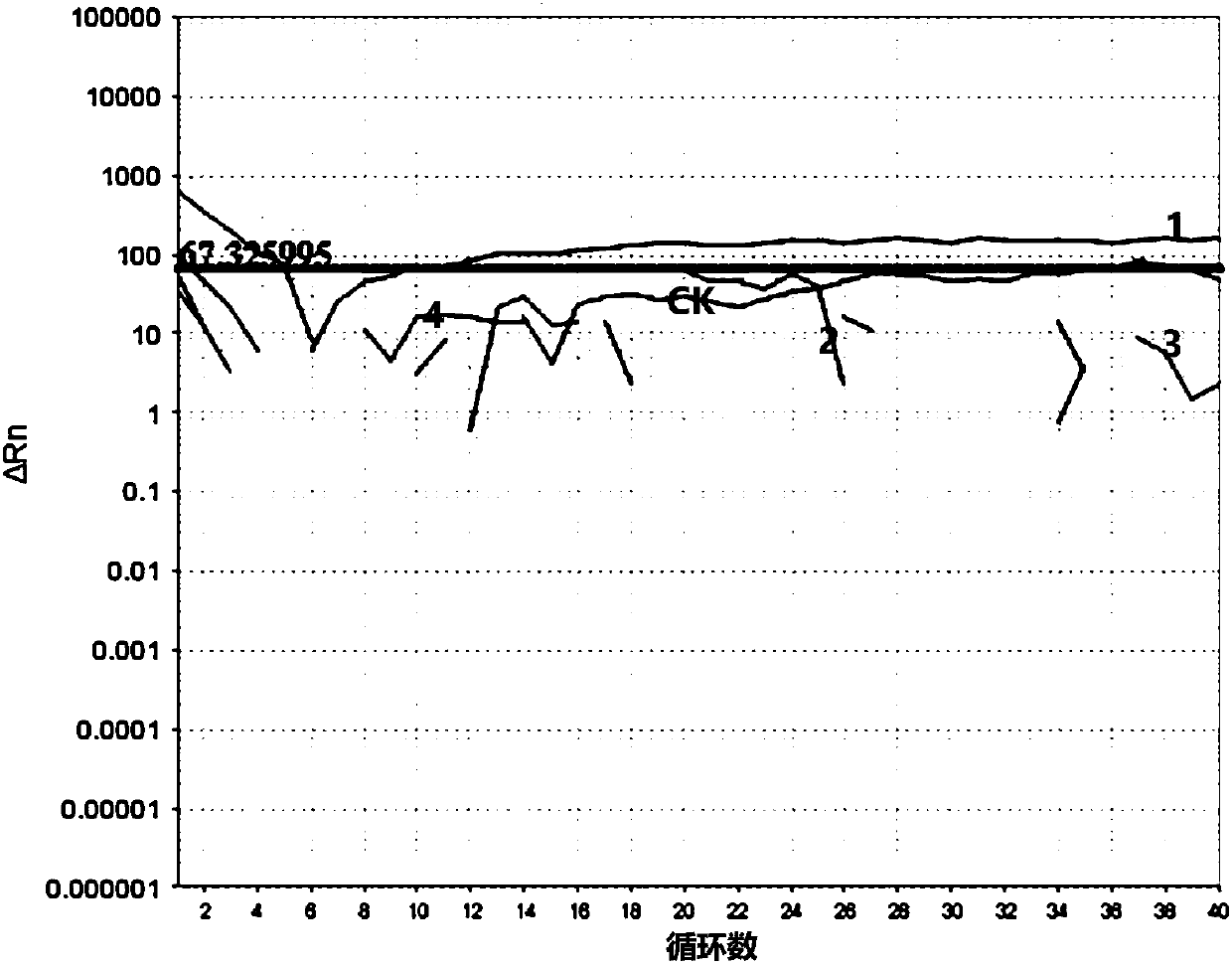NASBA detection method for identifying 1/2c serotype of listeria monocytogenes
A detection method, Listeria monocytogenes technology, applied in the detection/testing of microorganisms, DNA/RNA fragments, recombinant DNA technology, etc., to achieve rapid detection, high sensitivity, and strong specificity
- Summary
- Abstract
- Description
- Claims
- Application Information
AI Technical Summary
Problems solved by technology
Method used
Image
Examples
Embodiment 1
[0044] Example 1: Specific verification of NASBA detection method
[0045]Using the RNA of 36 strains of Listeria monocytogenes (including 13 serotypes, including 4 strains of 1 / 2c serotype) and 24 strains of non-Listeria monocytogenes as templates, the specificity of the established NASBA reaction system was evaluated . Three parallel samples were set up for each sample, and NASBA water was used as a blank control. The reaction result is judged by the Ct value, greater than 35 is negative, and less than 35 is positive. The test results are shown in Table 2. The results showed that the 4 strains of Listeria monocytogenes serotype 1 / 2c could produce obvious fluorescent amplification signals, while the other non-1 / 2c serotype strains had no fluorescent signals, and the reaction was negative , indicating that the established real-time NASBA reaction has good specificity.
[0046] Table 2 Experimental strains and NASBA reaction detection results
[0047]
[0048]
example 2
[0049] The detection limit determination of example 2NASBA reaction system
[0050] (1) Determination of detection limit of total RNA
[0051] Take 1 mL of FSIS 57115 serotype 1 / 2c strain of Listeria monocytogenes cultured to the logarithmic phase to extract total RNA, measure the concentration of total RNA with a nucleic acid concentration analyzer, and then use RNase-free ddH 2 O Perform serial 10-fold serial dilutions for real-time NASBA reactions. The test results are shown in Table 3. When the concentration of Listeria monocytogenes is in the range of 13.8ng / μL~13.8fg / μL, the NASBA detection system can obtain credible positive results, and the fluorescent signal is still strong at this time. However, when the RNA concentration continued to decrease, an effective Ct value could not be obtained, and the result was judged to be negative. The detection limit of this reaction system for total RNA of Listeria monocytogenes serotype 1 / 2c was 13.8 fg / μL.
[0052] Table 3 RNA t...
example 3
[0058] Example 3NASBA reaction system detects live bacteria, heat-killed bacteria and VBNC bacteria in chicken samples
[0059] Cultivate Listeria monocytogenes 1 / 2c serotype strain FSIS 57115 to the logarithmic phase, take 1mL of the bacterial liquid, wash the bacterial cells twice with sterile saline and resuspend, adjust the cell concentration of the resuspended bacterial liquid to N× 10 7 CFU / mL, which is to be tested as a live bacteria sample. The heat-killed bacteria were prepared by heat inactivation in a boiling water bath for 15 minutes, and it was confirmed by plate counting that there were no colonies in the bacteria liquid sample. Viable but non-culturable (VBNC) bacteria were induced by low temperature.
[0060] Take 40g of frozen chicken, and use the national standard method to determine that the sample to be contaminated does not contain Listeria monocytogenes. Three different states of Listeria monocytogenes were used to artificially pollute chicken, includi...
PUM
 Login to View More
Login to View More Abstract
Description
Claims
Application Information
 Login to View More
Login to View More - R&D
- Intellectual Property
- Life Sciences
- Materials
- Tech Scout
- Unparalleled Data Quality
- Higher Quality Content
- 60% Fewer Hallucinations
Browse by: Latest US Patents, China's latest patents, Technical Efficacy Thesaurus, Application Domain, Technology Topic, Popular Technical Reports.
© 2025 PatSnap. All rights reserved.Legal|Privacy policy|Modern Slavery Act Transparency Statement|Sitemap|About US| Contact US: help@patsnap.com



